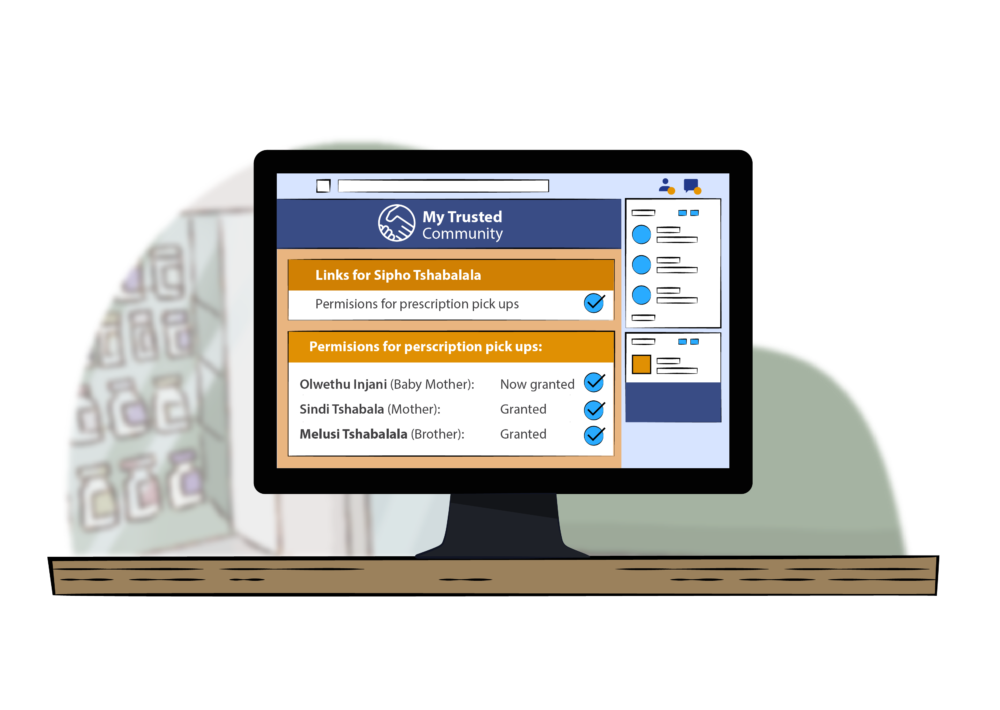My Trusted Community
My Trusted Community allows any public health patient to securely link a trusted individual into their care network, giving this person permission to obtain and deliver prescriptions to them. The seeker and their care network are securely identified via a biometric ID tool. The seeker has full control of who they allow in their circle of care; family member, neighbor, friend, community health worker. All can be formally linked via the My Trusted Community system and are formally embraced by the health care system as valuable links in the chain of care.
ARC’s community engagements revealed the extent to which individual health seekers are supported by a close, trusted network of caregivers. Several innovations we found focus on more conveniently linking treatment and prescriptions to seekers through home delivery or technology-empowered lock boxes located in high traffic areas.
We envision complimenting investments in new technologies needed to geolocate and deliver to patients in densely urban or extremely rural homes (that typically don’t have street addresses nor sometimes even access roads) and the construction of banks of secure lockers in shopping malls via a simple system that empowers those natural health seeker networks of care.
Today, Several innovations we found focus on more conveniently linking treatment and prescriptions to seekers through home delivery or technology-empowered lock boxes located in high traffic areas like shopping malls. Technologies needed to geolocate and deliver to patients in densely urban or extremely rural homes (that typically don’t have street addresses nor sometimes even access roads) are currently solved by analogue solutions of training unemployed youth to offer secure delivery services for the elderly, otherly abled and working folks who haven’t the luxury of time. Collect&Go offers last mile dispensaries for chronic medication making it easier for health seekers to obtain their medicine without the need to attend often time consuming collection appointments.
In the future, a diverse bouquet of innovative solutions at scale would empower health seekers to readily access health services and regular prescriptions in ways convenient and secure for them, especially during crisis times. Not all these future solutions will be tech innovations but instead better use of existing tech possibilities. Friends and family will always remain a key support network and using tech to integrate them into a patient’s care is a good example of this possibility.
In order for community based innovations to really amplify and make a difference, the following challenge need to be addressed:
Innovators and entrepreneurs need clear paths and contact points to collaborate and put themselves on a path for partnerships. Government support and investment could help in not only giving these innovations the high level political signal of legitimacy but also challenge thinkers and designers to go to work addressing evidence based and contextual solutions to pressing health problems in their communities.
Using methodologies like Human Centered Design can co-create better links to care and treatment while addressing the logistical and human barriers to successful implementation.
The following questions ought to be considered:

-
How might we unlock innovation between the health care systems and community based innovators/entrepreneurs to better address service gaps in key communities?
-
How might we redesign the interface between health care policy-makers, regulators and innovators to accelerate impact?
-
How might we co-design public/private financing systems to scale innovations that show evidence based impact amongst previously hard-to-help populations?